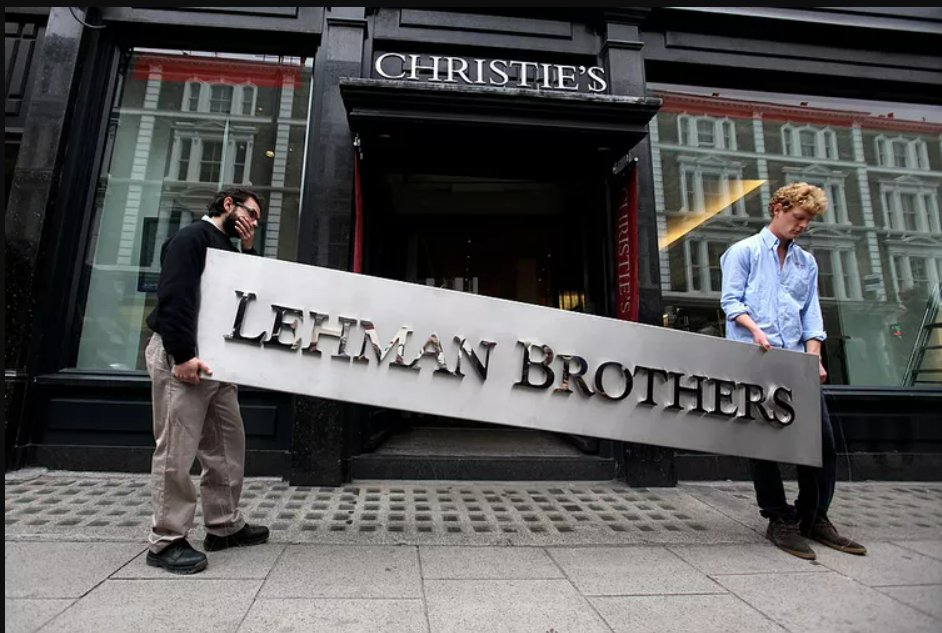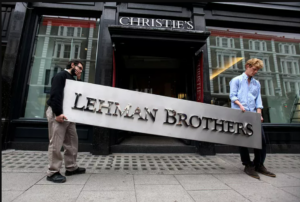8:00AM - 5:00PM
Monday to Friday



PHOTO: OLI SCARFF / GETTY IMAGES
Hello, and welcome back to our Five-Part Article Series on the warning signals of a Failing Organization. In this edition (Part III), we take a look at Warning Signal #3 – Denial of Risk and Failure to Confront Brutal Facts.
Here, Organizations and leaders become blind to the impending danger, denying risks and challenges that threaten their very existence. And we could not think of any better stories than those of 1) Lehman Brothers and 2) Spencon Services, to illustrate this very important warning signal.
About the Fall of Lehman Brothers
Lehman Brothers Holdings Inc, founded in 1844, was the fourth-largest United States investment bank before it went bankrupt in September 2008.
Lehman used a high-leverage business model that required it to raise billions of dollars every day to keep the doors open. And as such, the Company invested heavily in high-risk real estate and sub-prime mortgages.
But because of its so-many decades of success, some of the senior executives believed that the Company was unique and normal rules did not apply to them. According to Madelyn Antoncic, who was the Chief Risk Officer at Lehman Brothers between 2002 and 2007, “Risk management was repeatedly overruled. It was a shame because back in 1998 they were in trouble, and there was no need for them to have gotten themselves back into that spot by 2008.”
Even during its final days in August 2008, Lehman’s Management seemed to be in a state of denial. The Korean Development Bank had offered to invest in the company for a 50% equity stake, but Lehman’s management disagreed on the price for the deal. Meanwhile, the market environment deteriorated, which forced Korean Development Bank to keep reducing its offer price. The Korean bank made its last offer of $5.3 billion for a 25% stake just three or four days before Lehman wound up, and they still could not agree on a price.
When it was all over, the 164-year-old Lehman Brothers – with its $619 billion in debts – became the largest corporate bankruptcy filing in U.S. history and it kicked off the 2008 global financial crisis.
Inside the Collapse of Spencon Services Ltd
This one is closer to home – Uganda and Africa!
Founded in 1979 in Kenya, Spencon was once one of the largest construction firms in East and Central Africa. At its peak, it employed more than 5,000 employees and boasted major infrastructure projects across seven countries.
In 2014, after experiencing consistent financial difficulties, the U.S. investment firm Emerging Capital Partners (ECP), which had in 2006 and 2007 invested $15 million in Spencon, appointed two British executives – Andrew Ross and Steven Haswell – as directors with the aim of rescuing the struggling business.
However, a 2020 BBC Africa Eye investigation into the operations of Spencon uncovered a tale of unspeakable dirt and actions at the hands of the two directors. For instance, while the Company was literally chocking on debt and out of cash flows, Ross and Haswell paid $70,000 for their own company cars and argued that the cars projected an image of an organisation of substance rather than one close to insolvency.
The two also decided to build a golf course at Spencon’s former Nairobi offices and hired a consultant from one of Kenya’s leading golf clubs. They told the BBC Africa Eye that the golf course was built at a negligible cost using Spencon staff and equipment and projected a positive image of the company.
In the end, Ross and Haswell did not succeed in saving Spencon. And in 2016, after almost four decades in business, Spencon was gone. Whereas in Uganda Spencon is still under receivership, much of its properties spread in Kenya, Tanzania, Sudan, Malawi, Zambia and Mozambique have been disposed of.
Lessons To Learn
PLEASE NOTE: No Organization is Too Big to Fail!
To be continued…
Please also read Part I The Five Warning Signals for a Failing Organization -Part 1 – Talis Consults and II: The Five Warning Signals for a Failing Organization – Part II – Talis Consults
© 2023 Talis Consults Ltd, a Ugandan Limited Liability Company. All rights reserved.

The most important characteristics of blue ocean strategy is a new way of solving users’ pains, which means creating the solution no one expected to exist, but that everyone needed. This is called value innovation. “The best way to beat the competition is to stop trying to beat the competition” - Chan Kim and Renée Mauborgne
Read More
Nicoline
August 12, 2023Hi there colleagues, its wonderful article regarding teachingand fully explained, keep it up all the time.